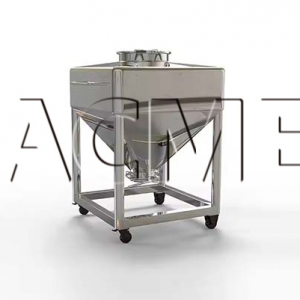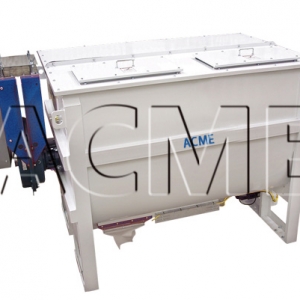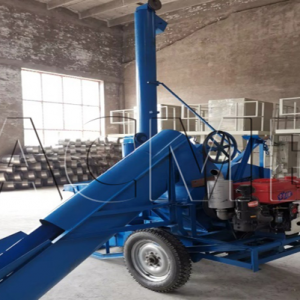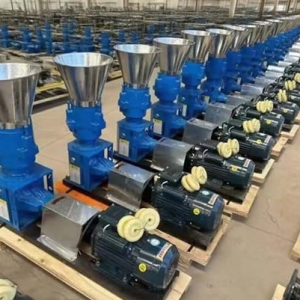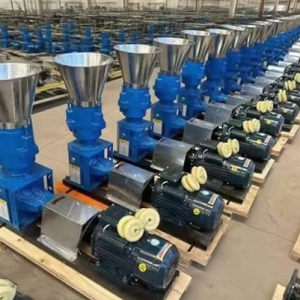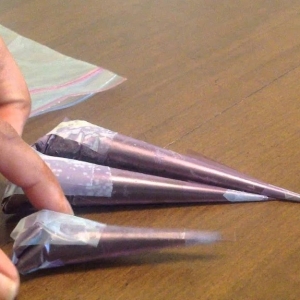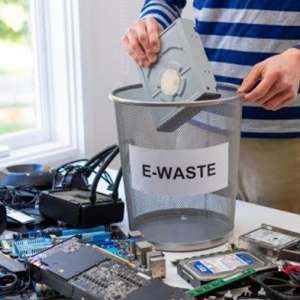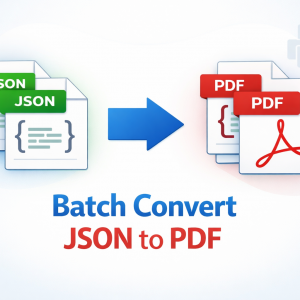In today's rapidly developing plastics processing industry, single-screw extruders, as one of the most fundamental and core pieces of equipment, are undergoing unprecedented technological change. From traditional manufacturing to intelligent manufacturing, and from general-purpose processing to specialized customization, single-screw extruders have achieved significant breakthroughs in efficiency, precision, and sustainability. This article will deeply analyze the latest technological advances, typical application scenarios, and future development trends of single-screw extruders. By showcasing the latest developments in this field through real-world cases and data, it will provide valuable reference for industry practitioners, researchers, and readers interested in plastics processing technology.
Recent Advances in Single-Screw Extruder Technology
Single-screw extruders, essential equipment in the plastics processing industry, have seen significant technological breakthroughs in recent years in drive systems, screw design, and heating technologies. These innovations have not only enhanced equipment performance but also significantly improved energy efficiency and product quality, bringing revolutionary changes to the plastics processing industry.
Innovation in drive systems is a key indicator of technological advancement in single-screw extruders. Traditional extruders typically utilize a "motor + reduction gearbox" transmission system, which presents challenges such as complex structure, high noise levels, and low efficiency. However, the latest development of low-speed, high-torque AC servo motor direct drive technology has revolutionized this situation. Chinese patent CN201325165Y demonstrates this innovative design, which uses an AC servo controller to directly drive a low-speed, high-torque AC servo motor, which is then connected to the screw via a coupling, eliminating the traditional reduction gearbox. This design simplifies the equipment structure by 40% and reduces noise by over 30 decibels. It also enables stepless speed control, meeting the high-precision molding requirements for complex cross-sectional shapes. KraussMaffei's 36D series single-screw extruders utilize an optimized drive concept and robust gearbox design, ensuring high torque output while achieving long-term stable operation. These extruders are particularly suitable for the continuous extrusion of materials such as PE and PP.
Optimizing screw design is another key to improving extruder performance. Nanjing Hengao's SJ series single-screw extruders feature a length-to-diameter ratio of 25:1 to 33:1, combined with a specialized vented screw structure, making them particularly suitable for processing environmentally friendly materials such as PE/PP biodegradable materials. Patent WO2014139065A1 discloses an innovative segmented screw design, comprising a feed section, a compression and separation section, a mixing section, and a metering section. This screw's unique feature is the mixing section's "corrugated" design, with alternating primary and secondary flights. This allows the material to undergo alternating compression and relaxation, ultimately achieving complete plasticization and uniform mixing. Tests have shown that this design can reduce crystallization and bubbles in plastic products by over 50%, making it particularly suitable for processing high-viscosity materials such as PET. Battenfeld's newly launched solEX NG 75-40 single-screw extruder, through optimized screw structure, increases output by 25% compared to its predecessor while reducing energy consumption by 15%, making it an ideal choice for producing large-diameter pipes.
Advances in heating technology have significantly improved energy efficiency and temperature control accuracy. Traditional resistance wire heating coils have problems such as large heat loss, high ambient temperature, and short life. The electromagnetic induction heating technology used in the CN201325165Y patent solves these pain points. The electromagnetic induction heating coil acts directly on the barrel, which improves thermal efficiency by more than 30% and reduces the workshop ambient temperature by 10-15°C, making it particularly suitable for continuous production in high-temperature environments in summer. Keya Chemical's SK53 MT twin-screw extruder (the relevant technology is also applicable to single-screw models) uses an imported CO-AX coaxial solenoid valve precision temperature control system, combined with the patented technology of the powder alloy integral bushing barrel, to achieve a temperature control accuracy of ±0.5°C, while also improving wear resistance and corrosion resistance by 2-3 times.
These technological innovations are not isolated, but rather synergistic. For example, Battenfeld's BC 120-35-C single-screw extruder is designed specifically for environmentally friendly materials such as PET/PLA. It combines optimized screw geometry, a large-surface exhaust device, and a precise temperature control system to achieve a production capacity of up to 1.5 tons/hour and is certified for food grade by both the European EFSA and the US FDA. Nanjing Hengao's specialized exhaust screw structure, combined with a PLC/PCC computer control system, ensures stable extrusion and excellent physical properties of biodegradable sheets. These examples demonstrate that modern single-screw extruders are developing towards higher efficiency, precision, and specialization, offering more possibilities for the plastics processing industry.
Typical application scenarios of single screw extruders
The application areas of single-screw extruders continue to expand with technological advancements, from traditional plastic product production to emerging environmentally friendly material processing, and even to high-standard industries such as medical and food packaging. Their adaptability and professionalism are significantly improving. The specific extrusion process requirements of different industries have also led to the development of various specialized models, forming a rich and diverse application ecosystem.
The processing of environmentally friendly materials has become a key application for single-screw extruders. With growing global environmental awareness, market demand for biodegradable plastics is rapidly growing. Nanjing Hengao's dedicated production line for PE/PP biodegradable materials utilizes a single-screw extruder with a newly designed venting screw structure, capable of effectively processing these environmentally sensitive raw materials. This system, combined with automated thickness gauge tracking and detection, not only ensures stable and uniform sheet extrusion, but also the product's physical properties and subsequent processing performance. These environmentally friendly sheets are widely used in blister molding to produce various food containers such as trays, noodle bowls, and lunch boxes, meeting the environmentally friendly packaging needs of large supermarkets. Inner Mongolia Pujing Polymer Materials Technology's independently developed Vytary® fully biodegradable resin boasts a heat deflection temperature of 171°C, surpassing the heat resistance limit of biodegradable materials. Its processing relies on a specially optimized single-screw extrusion process. This material has received EU FDA food contact certification, filling a gap in high-temperature applications such as milk tea straws.
In the packaging field, single-screw extruders demonstrate extremely high adaptability and efficiency. The BC 120-35-C single-screw extruder launched by Battenfeld is specially designed for PET/PLA sheets. Its wide processing window can adapt to different raw material grades, and there is no need to frequently replace the screw and barrel. The online/offline dual-mode design of the equipment supports single-layer and co-extrusion processes, with a maximum output of 1.5 tons/hour. At the same time, it simplifies the operating process and greatly reduces the complexity of maintenance. The food-grade recycled low-carbon polypropylene (R-PP) material developed by Shanghai Ruimo Environmental Protection New Materials Co., Ltd. adopts a single-screw extrusion process that meets food contact safety standards and achieves recycling of takeout lunch boxes as raw materials. Compared with virgin materials, it can reduce carbon emissions by more than 80%, and has obtained multiple certifications such as GRS, UL2809 OBP, and US FDA.
Pipe and profile production is the traditional strength of single-screw extruders, and new technologies have given this field new life. Battenfeld's solEX NG 75-40 single-screw extruder is designed for large-diameter pipes, offering screw diameter options from 45 to 120 mm and an output range of 600 to 2500 kg/h. Its U-shaped or Z-shaped motor design is compact and stable, making it an ideal choice for large-scale extrusion production lines. Nanjing Hengao's single-screw plastic wood profile extrusion production line is developed for popular plastic wood composite profiles on the market, with a maximum wood powder content of up to 70%, expanding the application of extruders in the field of building materials.
In the manufacturing of medical and food-grade products, the high cleanliness and precision control advantages of single-screw extruders are fully utilized. Laboratory-grade single-screw extruders can be used to produce products such as medical catheters, syringes, and IV tubing, providing a fast and controllable plastic processing solution for medical device R&D and small-batch production. Wanhua Chemical's Wanthane® M series medical-grade TPU products utilize a single-screw extrusion process, mastering key technologies such as metal residue control, low small molecule residue, and batch stability. These products cover a hardness range of 70A-82D and have passed full biocompatibility certifications according to GB/T 16886 and ISO10993, breaking the monopoly of imported products.
Specialty material processing has also benefited from advances in single-screw extrusion technology. Shaanxi Yanchang Zhongmei Yulin Energy Chemical's green, energy-saving, and highly transparent polypropylene series products, utilizing the innovative application of the fourth-generation NX8000 clarifier, demonstrate significant advantages during single-screw extrusion pelletization. They maintain a balanced transparency and toughness while significantly reducing production energy consumption and downstream processing temperatures, successfully replacing traditional polystyrene in home appliance components. Kingfa Technology's highly flame-retardant, low-smoke, halogen-free wire and cable materials utilize a single-screw extrusion process, capable of achieving extrusion speeds exceeding 150 meters per minute. These products have been adopted by leading cable manufacturers such as Baosheng, Shangshang, and Far East.
These application cases demonstrate that modern single-screw extruders are no longer simply general-purpose equipment; they have developed highly specialized technical features tailored to the needs of diverse industries. From the specialized processing requirements of environmentally friendly materials, to the high cleanliness standards of medical-grade products, to the high-performance processing of specialty materials, single-screw extrusion technology is continuously innovating to meet the unique needs of various industries, demonstrating remarkable adaptability and growth potential.
Industry development trends and market prospects
The single-screw extruder industry is at a critical stage of technological change, with both the global market landscape and industrial structure undergoing profound adjustments. From intelligent upgrades to sustainable development, and from high-end domestic production to global competition, this sector is experiencing diversified development trends. Understanding these trends is crucial for equipment manufacturers, processors, and investors in formulating strategies.
Intelligence and automation have become the mainstream trends in the development of single-screw extruders. According to a report by Market Research Future, the market revenue for automated extrusion equipment is expected to reach US$7.23 billion by 2024, with a compound annual growth rate of 3.2% during the forecast period. The application of artificial intelligence technology in the extrusion process enables real-time monitoring, predictive maintenance, and optimized production efficiency, significantly reducing the need for manual intervention. Battenfeld's solEX NG and BC series single-screw extruders are equipped with advanced automated control systems, which not only simplify operating procedures but also improve product consistency. Nanjing Hengao's sheet production lines utilize PLC or PCC computer control systems, combined with automatic thickness gauges, for precise control of the extrusion process. Keya Chemical's SK53 MT twin-screw extruder (the relevant technology is applicable to single-screw extruders) is equipped with German ultra-high-torque gearbox technology and a coaxial solenoid valve precision temperature control system, achieving an overall efficiency of ≥95% while reducing noise and energy consumption. These cases demonstrate that intelligent integration is reshaping the technical landscape of single-screw extruders.
The trend toward energy conservation and environmental protection is profoundly impacting the technological evolution of extrusion equipment. The high energy consumption and heat loss issues of traditional extruders are being addressed through a variety of innovative solutions. Electromagnetic induction heating technology saves over 30% energy compared to traditional resistance wire heating while also lowering ambient workshop temperatures. Ningbo Jianfeng New Materials' rABS-Ocean78A, a marine "zero-carbon" recycled material, uses a specialized extrusion process, resulting in carbon emissions of ≤0.75 tonCO2e/t, over 80% less than virgin materials. It has also been certified according to international recycling standards such as GRS and SCS Global. A report by Market Research Future indicates that the growing demand for sustainable and energy-efficient production processes is driving the development of extrusion equipment with environmentally friendly features, such as designs that reduce energy consumption and waste generation. Shaanxi Yanchang Zhongmei Yulin Energy Chemical's green, energy-saving, and highly transparent polypropylene has significantly reduced production energy consumption and processing temperatures through optimized extrusion processes. These developments demonstrate that green manufacturing has become a core driver of innovation in single-screw extrusion technology.
High-end domestic substitution is a significant trend in China's single-screw extruder industry. The high-end extrusion equipment market has long been dominated by international brands, but this landscape is changing. Hainan Beiouyi Technology's Betopp® series of POE products utilizes a proprietary continuous solution polymerization process, enabling domestic substitution of high-end POE materials in the photovoltaic and automotive sectors. Wanhua Chemical's Wanthane® M series of medical-grade TPU products, through innovative extrusion processes, has broken the monopoly of imported products in the medical field. Kingfa Science & Technology's highly flame-retardant, low-smoke, and halogen-free wire and cable materials utilize proprietary technology and have been adopted by several leading cable manufacturers. These examples demonstrate that Chinese companies are achieving breakthroughs in core technologies and are gradually shifting the reliance on imports for high-end extrusion equipment and materials.
The demand for lightweight material processing has created new market opportunities for single-screw extruders. A report by Market Research Future indicates that the growing demand for lightweight, durable materials in industries such as automotive, aerospace, and construction is driving the extrusion equipment market. Tairui Machinery's NEO·H550 micro-foam injection molding machine (with related technology suitable for extrusion) achieves a 15% weight reduction by precisely blending nitrogen with plastic and controlling pressure to create a uniform microporous structure within the product. Wanhua Chemical's Wanamid® nylon 12 thermoplastic carbon sheet material reduces part weight by over 25% through extrusion process optimization and is fully recyclable. These innovations demonstrate the significant application value of single-screw extrusion technology in lightweighting materials.
The global competitive landscape is reshaping, and Chinese companies are beginning to emerge. Internationally renowned companies such as KraussMaffei, Coperion, and Battenfeld continue to lead in technological innovation and market expansion. However, Chinese manufacturers such as Nanjing Hengao and Keya Chemical are gradually improving their international competitiveness by focusing on niche markets and pursuing independent innovation. According to a report by Market Research Future, the Asia-Pacific region is expected to be the fastest-growing region in the extrusion equipment market, with a production value of US$2.694 billion in 2023. This provides ample room for development for Chinese companies. This shift in the competitive landscape suggests that differentiated innovation and localized service will become key factors in future market competition.
Over the next five years, the single-screw extruder industry will exhibit diversified development trends: on the one hand, high-end equipment will become more intelligent and specialized, meeting the precision processing requirements of specific materials; on the other hand, mid-range equipment will reduce costs and expand market penetration through standardized and modular designs. Furthermore, the concept of sustainable development will be integrated into every aspect of equipment design, from energy utilization and material selection to waste disposal, to form environmentally friendly solutions throughout the entire life cycle. For Chinese companies, seizing opportunities for domestic substitution, achieving breakthroughs in key core technologies, and simultaneously expanding into international markets will be an effective path to achieving high-quality development.
Selecting the right single-screw extruder and properly operating and maintaining it are crucial for manufacturers to improve product quality and reduce production costs. Faced with a wide variety of models and technical specifications on the market, how can you make an informed choice based on your needs? How can you maximize equipment performance and extend its lifespan? This section provides professional advice from a practical application perspective to help users optimize return on investment and operational efficiency.
Clearing your processing needs is the first step in selecting a single-screw extruder. Different materials and products have significantly different extruder requirements. For example, processing biodegradable materials like PLA requires a model with a dedicated exhaust system, such as the vented screw structure developed by Nanjing Hengao, which effectively handles volatile substances released during processing. For producing large-diameter pipes, high-torque designs, such as the Battenfeld solEX NG 75-40, should be considered. This model offers a 25% increase in output over its predecessor, making it particularly well-suited for this application. For high-standard materials like medical-grade TPU, as demonstrated by Wanhua Chemical's case study, specialized extrusion systems that control metal residues and small molecules are essential. Users should carefully list material characteristics, product specifications, and production capacity requirements as the basis for equipment selection.
Evaluating core parameters requires specialized knowledge and practical experience. The screw's length-to-diameter ratio (L/D) is a key indicator. Nanjing Hengao's SJ series offers options ranging from 25:1 to 33:1. A larger L/D ratio generally improves plasticizing performance, but also increases cost and energy consumption. Patent WO2014139065A1 describes a screw design with an L/D ratio of 30-37:1, demonstrating excellent performance in PET processing. Specific torque is another crucial parameter. Keya Chemical's SK53 MT twin-screw extruder boasts a specific torque coefficient of 15 Nm/cm³, reflecting the screw's ability to transmit mechanical energy. Temperature control accuracy directly impacts product quality stability. Advanced models such as the Battenfeld BC 120-35-C achieve precise control within ±0.5°C, meeting the production requirements for food-grade PET sheet. Users should request detailed performance test reports from suppliers and, whenever possible, conduct a trial run with materials.
Energy efficiency evaluation is particularly important given rising energy costs. Electromagnetic induction heating can save over 30% energy compared to traditional resistance heating, while also reducing workshop temperatures by 10-15°C. Battenfeld's solEX NG series achieves a 15% reduction in energy consumption through optimized design. When evaluating energy efficiency, it's important to consider not only rated power but also specific energy consumption (energy consumption per unit of output). The extrusion process for the rABS-Ocean78A material developed by Ningbo Jianfeng New Materials produces only 0.75 tonCO₂e/ton of carbon emissions, over 80% less than virgin material, demonstrating the environmental potential of modern extrusion technology. Users can refer to international standards such as Energy Star or request detailed energy consumption data from suppliers for a full lifecycle cost analysis.
Operation and maintenance have a significant impact on equipment performance and lifespan. Proper startup procedures should include gradual temperature increases and low-speed startup to avoid thermal shock and mechanical overload. During daily operation, parameters such as torque, pressure, and temperature should be closely monitored to detect abnormalities promptly. The low-speed, high-torque AC servo motor drive design described in patent CN201325165Y simplifies maintenance by eliminating the need for vulnerable reduction gearbox components. Keya Chemical uses hot isostatic pressing (HIP) materials to improve wear and corrosion resistance by 2-3 times, significantly extending maintenance cycles. A comprehensive preventive maintenance plan should be established, including regular lubrication, tightening checks, and replacement of worn parts. Professional operator training is also essential; a highly qualified team can fully utilize the equipment's potential.
Upgrading can be a cost-effective option. Battenfeld's solEX NG series supports retrofits to existing solEX models, maintaining compatibility with existing production rates and lowering the investment barrier. For traditional extruders, considering switching from resistance heating to electromagnetic induction heating or adding an intelligent control system can significantly improve performance. Shanghai Ruimo Environmental Protection New Materials' food-grade recycled low-carbon polypropylene (R-PP) production line utilizes an advanced control system that enables full process traceability. When considering an upgrade, users should conduct a detailed cost-benefit analysis to compare the long-term returns of retrofitting versus purchasing a new machine.
Safety regulations must be strictly adhered to. Single-screw extruder operation involves high temperatures, high pressures, and mechanical motion risks. Compared to resistance heating, electromagnetic induction heating is not only more energy-efficient but also reduces the risk of surface burns. Equipment should be equipped with comprehensive safety features, such as emergency stop buttons, protective covers, and interlock systems. Furthermore, processing certain materials (such as those containing flame retardant additives) may generate hazardous gases, necessitating a good ventilation or exhaust system. While Kingfa Technology's highly flame-retardant, low-smoke, halogen-free wire and cable materials have low combustion toxicity, appropriate protective measures must still be taken during processing. Companies should establish a comprehensive safety management system and conduct regular safety inspections and employee training.
Through scientific selection, standardized operation, and meticulous maintenance, single-screw extruders can maintain long-term stable operation and create maximum value for businesses. With the increasing prevalence of intelligent and networked features as technology advances, remote monitoring and predictive maintenance will become standard features. Users should stay current on new technological trends and upgrade equipment and processes as appropriate to maintain their technological advantage in the competitive market.


